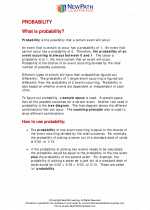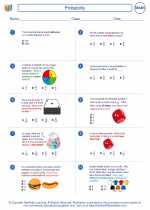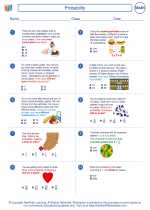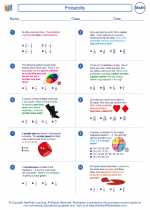Regression Analysis
Regression analysis is a statistical method used to examine the relationship between one dependent variable and one or more independent variables. It is commonly used to predict the value of the dependent variable based on the values of the independent variables.
Types of Regression Analysis
There are several types of regression analysis, including:
- Simple Linear Regression: Involves one independent variable and one dependent variable, and is used to understand the relationship between the two variables.
- Multiple Linear Regression: Involves multiple independent variables and one dependent variable, and is used to predict the value of the dependent variable based on the values of the independent variables.
- Polynomial Regression: Involves a curvilinear relationship between the independent and dependent variables, and is used when the relationship is not linear.
- Logistic Regression: Involves predicting the probability of a binary outcome based on one or more independent variables, and is used for classification tasks.
Steps in Regression Analysis
The general steps in performing regression analysis are as follows:
- Collect Data: Gather data on the dependent variable and independent variables of interest.
- Visualize the Data: Plot the data to understand the relationship between the variables.
- Choose the Model: Select the appropriate type of regression analysis based on the nature of the relationship.
- Fit the Model: Use statistical software to estimate the parameters of the regression model.
- Assess the Model: Evaluate the goodness of fit and the significance of the independent variables.
- Make Predictions: Use the regression model to make predictions about the dependent variable.
Applications of Regression Analysis
Regression analysis is widely used in various fields, including:
- Economics: To study the relationship between economic variables such as income, consumption, and investment.
- Finance: To predict stock prices and analyze the impact of interest rates on investments.
- Healthcare: To identify factors associated with disease outcomes and patient health.
- Marketing: To understand the impact of advertising and promotional campaigns on sales.
Study Guide
When studying regression analysis, it is important to understand the following key concepts:
- The difference between independent and dependent variables.
- The assumptions underlying regression analysis, including linearity, independence, homoscedasticity, and normality of residuals.
- The interpretation of regression coefficients and the significance of predictor variables.
- The use of diagnostic plots to assess the validity of the regression model.
- The practical application of regression analysis in real-world scenarios.
Practice using statistical software to perform regression analysis on sample datasets and interpret the results. Additionally, familiarize yourself with different types of regression models and their specific use cases.
By mastering regression analysis, you'll be able to analyze and predict relationships between variables, making it a valuable skill in various fields of study and professional applications.
.◂Math Worksheets and Study Guides Sixth Grade. Probability

 Worksheet/Answer key
Worksheet/Answer key
 Worksheet/Answer key
Worksheet/Answer key
 Worksheet/Answer key
Worksheet/Answer key
